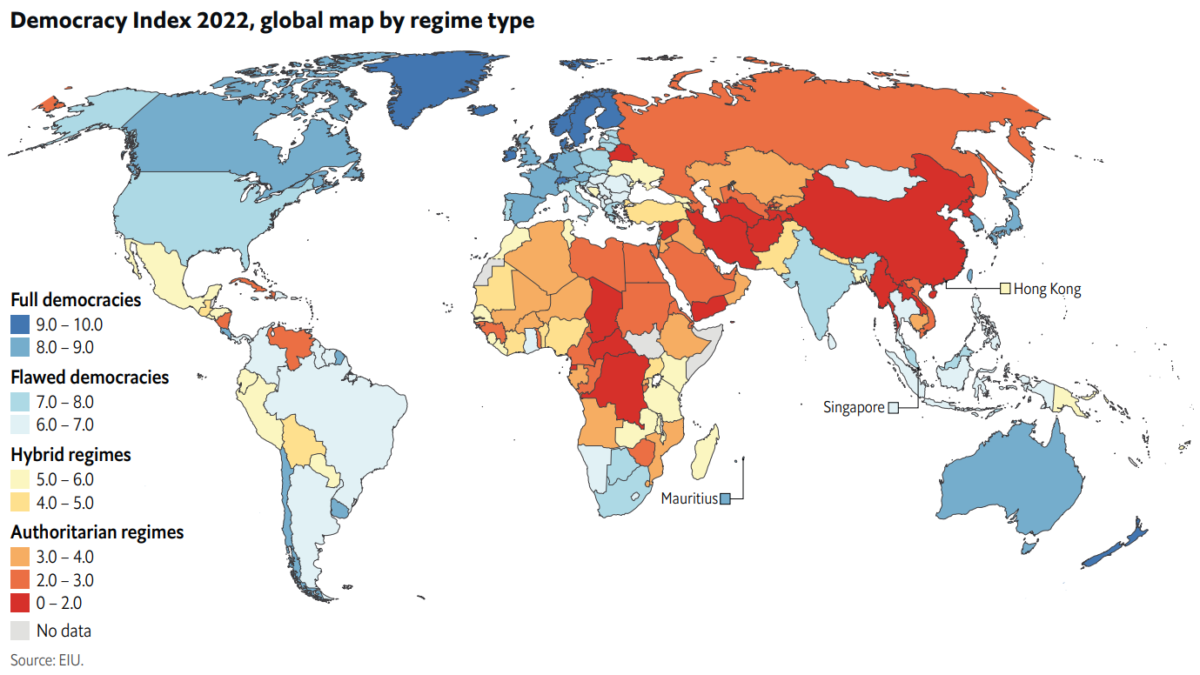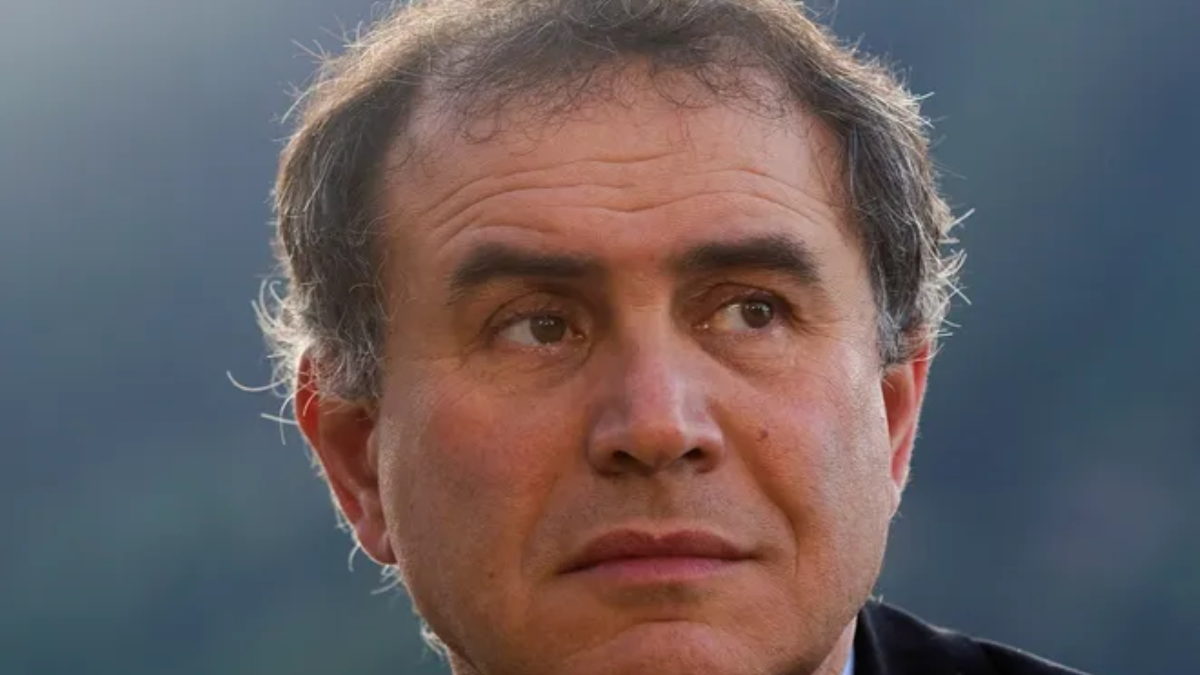India sets pandemic record with more than 400,000 new cases in one day – Covid mortality underreporting widespread – “We believe the true number of deaths is two to five times what is being reported”
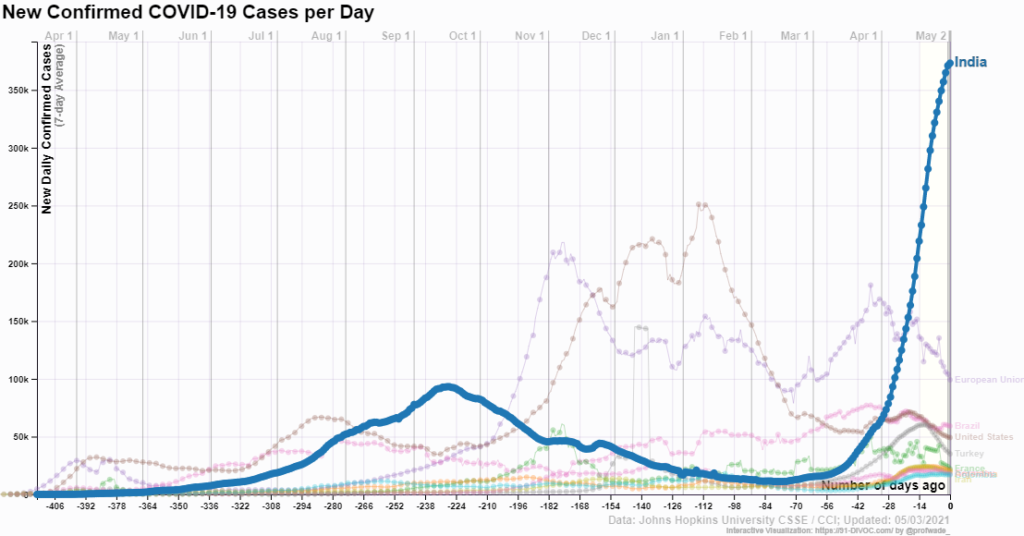
By Joanna Slater
1 May 2021
NEW DELHI (The Washington Post) – In sheer numbers, it is the worst surge since the pandemic began — and it is still gathering speed.
After a devastating week of soaring infections, India reported more than 400,000 new cases Saturday, a global record. Experts believe that number will climb even higher in the coming days, an unimaginable burden for a health system already under siege with hospitals issuing pleas for oxygen.
India’s experience underscores a sobering paradox: Even as the United States and Europe move away from the darkest days of the pandemic, other countries are engaged in a desperate struggle against the virus.
The powerful resurgence of infections in India — a country where cases had ebbed just months earlier — is also a reminder that the coronavirus is far from controlled around the world, even with vaccination rates climbing in many countries.
It remains unclear how large a role coronavirus variants are playing in the pandemic’s grip on India. But the staggering numbers themselves are leaving the country increasingly isolated. On Friday, the United States said it would restrict travel from India. Dozens of countries have begun sending aid to bolster hospitals overwhelmed by patients and short on crucial supplies.
In India’s capital, New Delhi, a hospital treating coronavirus patients ran out of oxygen on Saturday. It took an hour for fresh supplies to arrive. In the meantime, at least eight patients died, among them one of the hospital’s own doctors, said S.C.L. Gupta, the medical director of Batra Hospital.
The incident marks the second time in recent days in which an oxygen shortage at a Delhi hospital proved fatal. On April 23, a different hospital ran out of oxygen and 26 critically ill coronavirus patients died.
In New Delhi, people wait for hours at crematoriums to perform funeral rites for their loved ones. Dozens of pyres are packed closely together in scenes that are without precedent. Every day, people die outside hospitals, unable to access care.
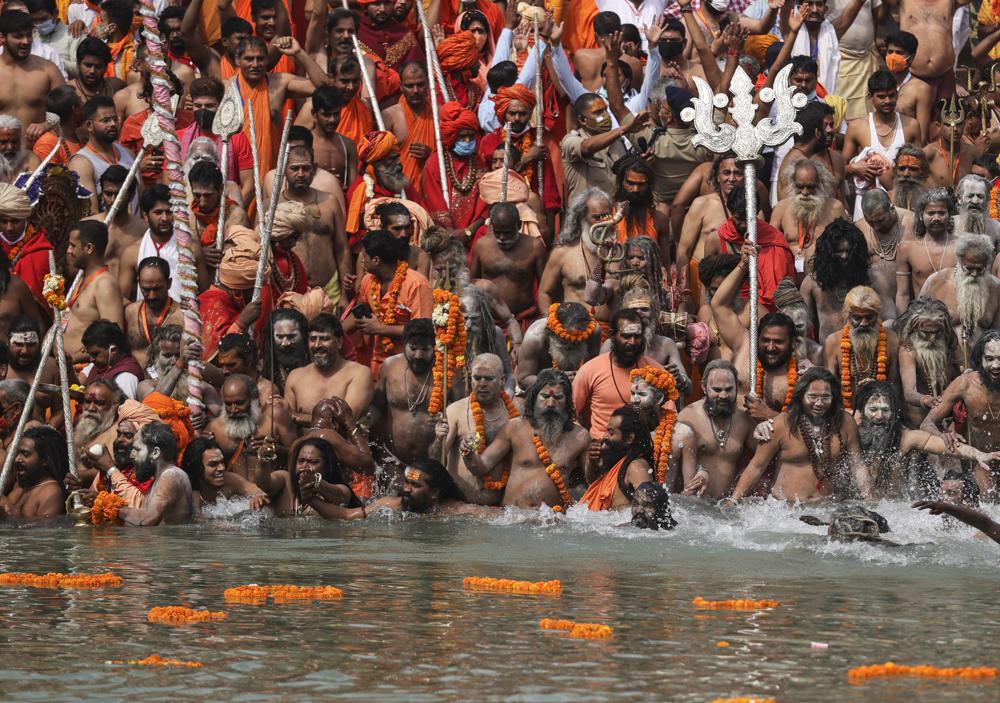
Anthony S. Fauci, the Biden administration’s chief medical adviser, urged India to explore ways its military could help alleviate the calamity, saying the situation is “like a war” in an interview with the Indian Express newspaper.
He also strongly advised India to implement a nationwide shutdown. “No one likes to lock down the country,” he said. But a temporary lockdown “could have a significant impact on the dynamics of the outbreak.”
India had announced it would open its vaccination program to all adults over the age of 18 starting Saturday, but in many parts of the country, there were not enough doses available to expand the program. Several state governments said they did not know when they would obtain the necessary supplies. [more]
India sets pandemic record with more than 400,000 new cases; Fauci says crisis is ‘like a war’
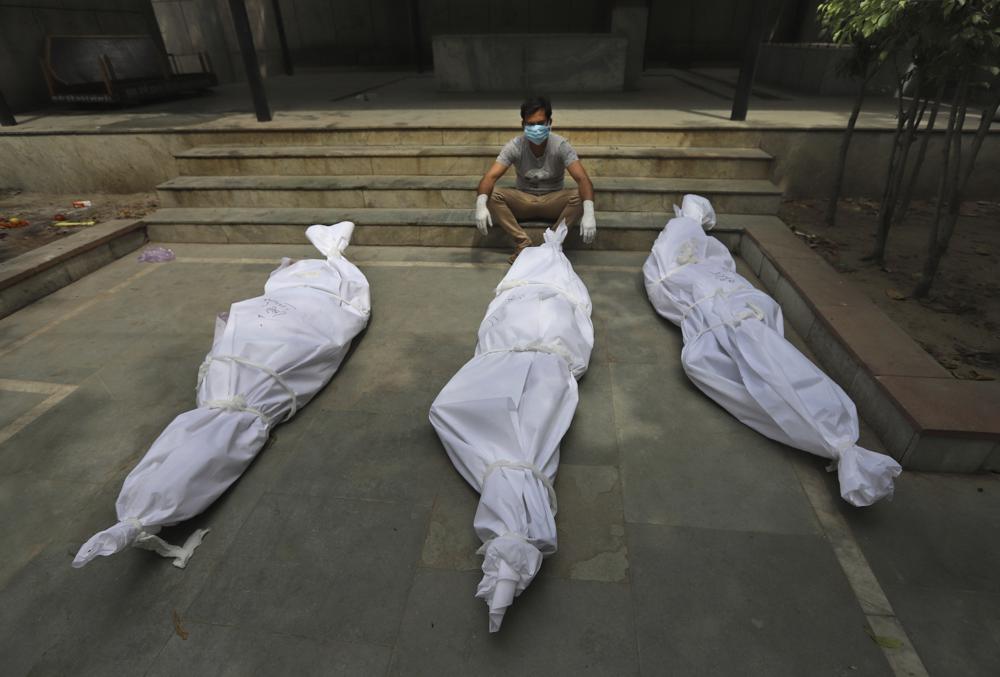
As Covid-19 devastates India, deaths go undercounted
By Jeffrey Gettleman, Sameer Yasir, Hari Kumar and Suhasini Raj
24 April 2021
NEW DELHI (The New York Times) – India’s coronavirus second wave is rapidly sliding into a devastating crisis, with hospitals unbearably full, oxygen supplies running low, desperate people dying in line waiting to see doctors — and mounting evidence that the actual death toll is far higher than officially reported.
Each day, the government reports more than 300,000 new infections [400,000 on 1 May 2021 –Des], a world record, and India is now seeing more new infections than any other country by far, almost half of all new cases in a global surge.
But experts say those numbers, however staggering, represent just a fraction of the real reach of the virus’s spread, which has thrown this country into emergency mode. Millions of people refuse to even step outside — their fear of catching the virus is that extreme. Accounts from around the country tell of the sick being left to gasp for air as they wait at chaotic hospitals that are running out of lifesaving oxygen.
The sudden surge in recent weeks, with an insidious newer variant possibly playing a role, is casting increasing doubt on India’s official Covid-19 death toll of nearly 200,000, with more than 2,000 people dying every day.

Interviews from cremation grounds across the country, where the fires never stop, portray an extensive pattern of deaths far exceeding the official figures. Nervous politicians and hospital administrators may be undercounting or overlooking large numbers of dead, analysts say. And grieving families may be hiding Covid connections as well, out of shame, adding to the confusion in this enormous nation of 1.4 billion.
“It’s a complete massacre of data,” said Bhramar Mukherjee, an epidemiologist at the University of Michigan who has been following India closely. “From all the modeling we’ve done, we believe the true number of deaths is two to five times what is being reported.”
At one of the large cremation grounds in Ahmedabad, a city in the western Indian state of Gujarat, bright orange fires light up the night sky, burning 24 hours a day, like an industrial plant that never shuts down. Suresh Bhai, a worker there, said he had never seen such a never-ending assembly line of death.
But he has not been writing down the cause of death as Covid-19 on the thin paper slips that he hands over to the mournful families, even though the number of dead is surging along with the virus.

“Sickness, sickness, sickness,” Mr. Suresh said. “That’s what we write.”
When asked why, he said it was what he had been instructed to do by his bosses, who did not respond to requests for comment. […]
Months ago, India seemed to be doing remarkably well with the pandemic. After a harsh initial lockdown early last year was eased, the country did not register the frightening case-count and death numbers that sent other big countries into crisis mode. Many officials and ordinary citizens stopped taking precautions, acting as if the worst days were over.
Now, countless Indians are turning to social media to send out heartbreaking S.O.S. messages for a hospital bed, medicine, some oxygen to breathe. “‘National Emergency,’” blared a banner headline in one of India’s leading papers, The Hindustan Times. Across India, mass cremations are now taking place. Sometimes dozens of fires go up at once. […]

“Many deaths are not getting recorded and they are increasing every day,” said Dr. G.C. Gautam, a cardiologist based in Bhopal. He said that officials were doing this because “they don’t want to create panic.”
The same phenomenon appeared to be happening in Lucknow and Mirzapur — major cities in Uttar Pradesh State — and across Gujarat, where, during a similar period in mid-April, the authorities reported between 73 and 121 Covid-related deaths each day.
But a detailed count compiled by one of Gujarat’s leading newspapers, Sandesh, which sent reporters to cremation and burial grounds across the state, indicated that the number was several times higher, around 610 each day.
The biggest newspapers in India have seized on the discrepancies. “COVID-19 deaths in Gujarat far exceed government figures,” read a recent front-page headline in The Hindu. [more]
